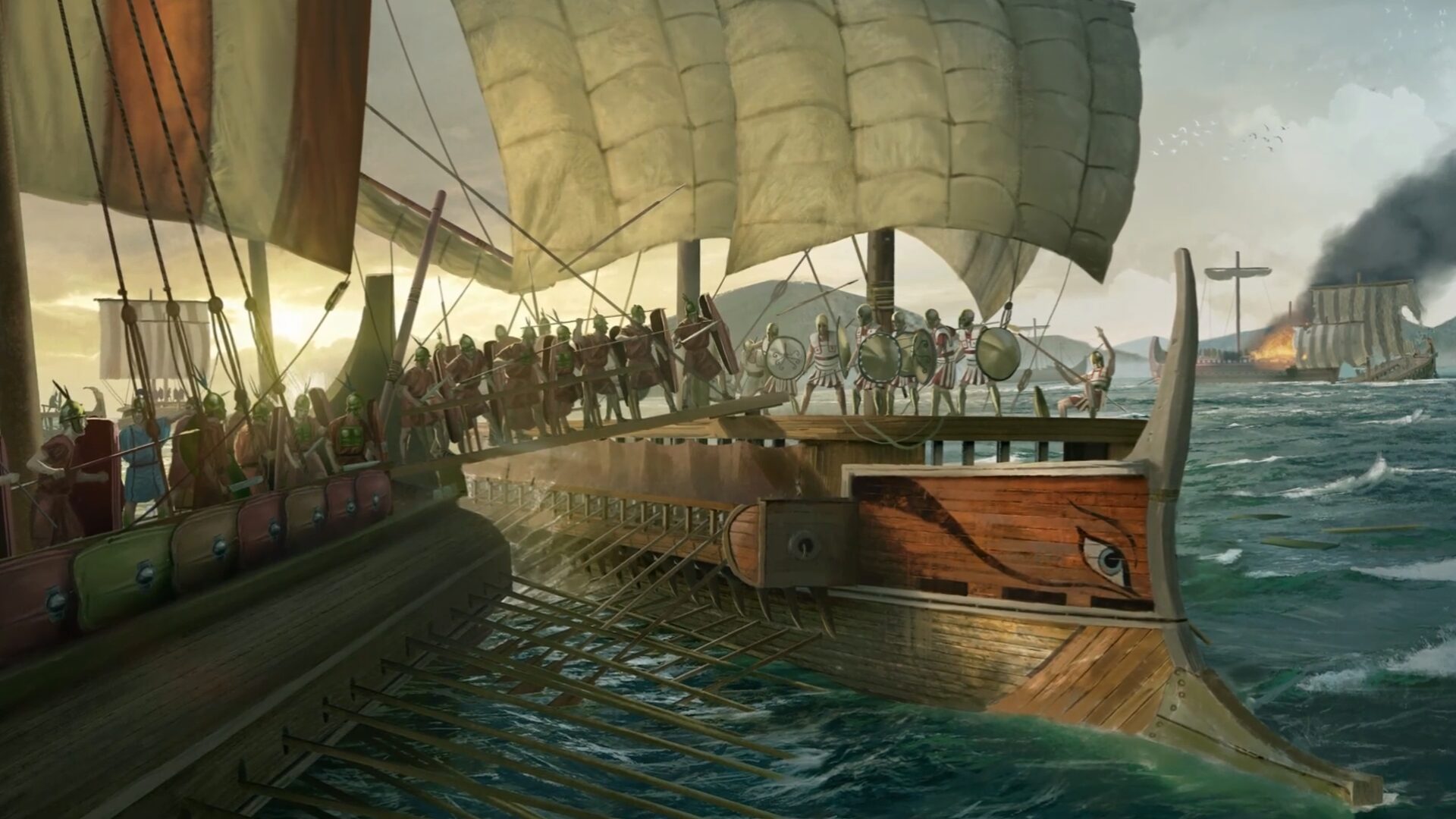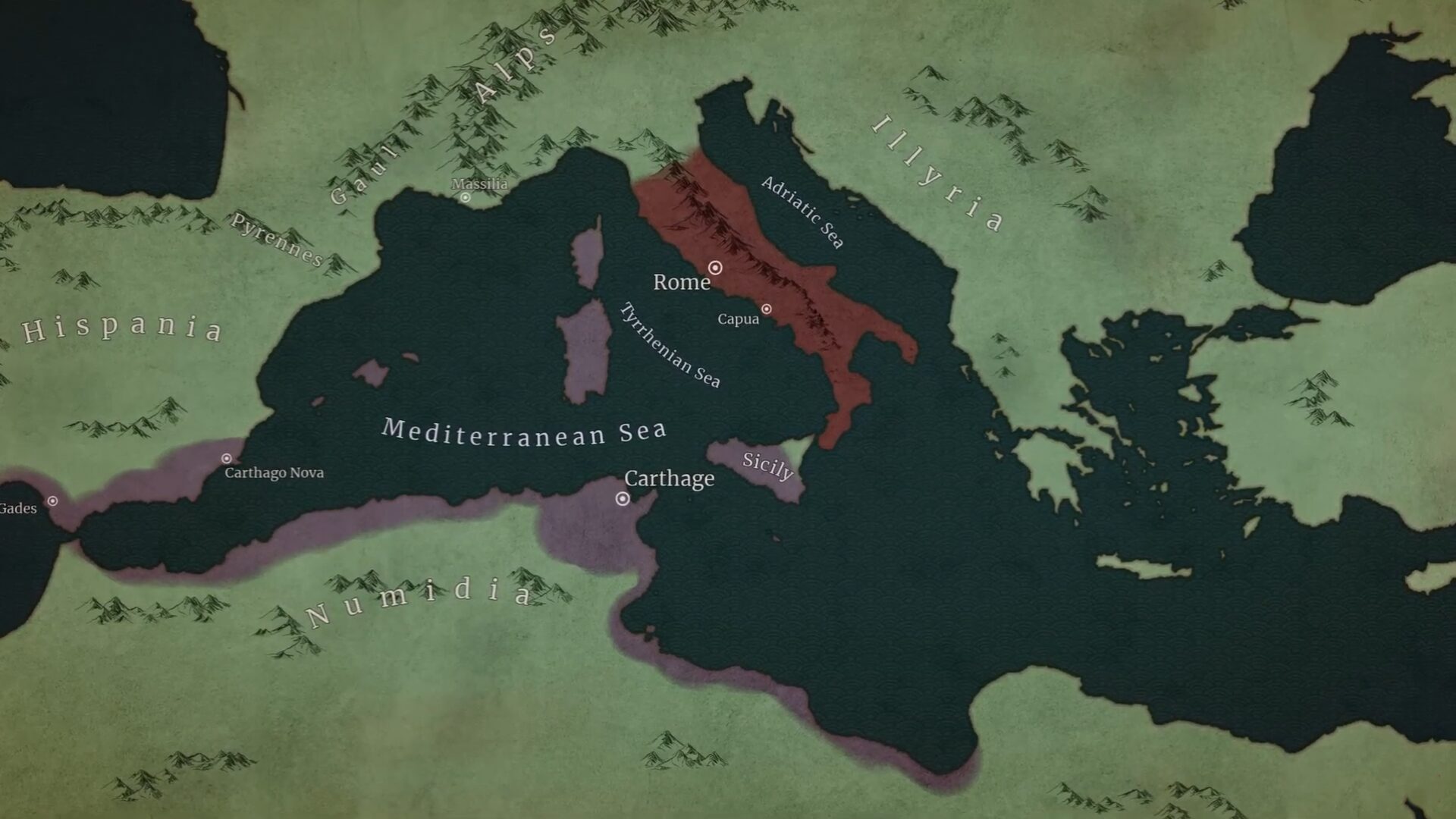In the third century BC, two powerful civilizations, Rome and Carthage, found themselves in a historic struggle known as the First Punic War. Rome, a growing republic on the Italian Peninsula, and Carthage, a thriving maritime empire, were driven by ambitions to control key territories. At the heart of their conflict was the strategically vital island of Sicily, which lay between their respective spheres of influence.
This epic war became a turning point for both nations. Initial battles showcased naval engagements, with Rome quickly adapting and improving its fleet to counter Carthage’s maritime dominance. On land, both empires demonstrated strategic maneuvers to gain the upper hand. The resolution came with a peace treaty that altered the balance of power in the Mediterranean and set Rome on a path toward greater imperial aspirations.
Key Takeaways
- Rome and Carthage clashed over control of Sicily.
- Naval and land tactics were crucial in shaping the outcome.
- The peace treaty expanded Rome’s influence and marked a shift in power.
Past Events and Setting
The 3rd Century BC with Rome and Carthage
During the 3rd century BC, Rome and Carthage were two powerful entities vying for control in the Mediterranean. Rome was expanding beyond Italy, setting its sights on new territories. Meanwhile, Carthage controlled significant areas in North Africa and the Mediterranean, supported by its strong naval presence. The Roman Republic aimed to increase its influence, posing a challenge to Carthage’s dominance. These ambitions led to inevitable conflict as both sought to extend their reach. The escalating tensions between these two powers centered around strategic regions, eventually resulting in war.
Importance of Sicily in Strategic Terms
Sicily played a key role in the power dynamics between Rome and Carthage. Located between Italy and Africa, control over the island was vital for both nations’ strategic plans. Rome and Carthage had significant investments and interests in Sicily. This made it a major point of contention and was a leading cause of their conflict. Holding Sicily meant controlling valuable trade routes and gaining a strategic advantage in the region. Consequently, both Rome and Carthage were unwilling to back down, which contributed to the outbreak of the First Punic War.
Beginning of the First Punic War
Tensions Rising to a Boiling Point
In the 3rd century BC, tensions were high as Rome and Carthage, two powerful entities, were on the brink of conflict. Rome, as an emerging republic, sought to stretch its influence past the Italian lands while Carthage was a wealthy seafaring empire with extensive holdings in North Africa and the Mediterranean. As both sides aimed to increase their authority, a collision was inevitable.
Fighting for Control of the Key Island
Sicily was at the heart of the conflict between Rome and Carthage. This island held a strategic position between Italy and Africa, making it a highly desired area for both powers. Neither Rome nor Carthage was willing to back down, knowing that control of Sicily was essential for their ambitions. Fierce sea battles defined this struggle, as Carthage had a strong navy, while Rome had to quickly improve its own seafaring capabilities to compete.
Carthage’s Command of the Seas
Carthage, a wealthy maritime empire, had dominance over the seas in the ancient Mediterranean. Thanks to their advanced fleets and skilled sailors, Carthage had control over many important trade routes.
Navigation on these waters was essential for protecting their interests and expanding their influence. They recognized that their naval strength was their main advantage in the fight to keep Rome from claiming territories like Sicily.
Rome’s Sea Strategy
Rome, initially inexperienced in naval warfare, faced the challenge of competing against Carthage’s formidable naval power. To address this, the Romans cleverly decided to imitate the design of Carthaginian ships.
Historians recount how Rome adopted the Quinquereme, a large and powerful warship. They trained their rowers meticulously, improving speed and coordination. This advancement allowed Rome to stand its ground against Carthage at sea as they continued their conflict over Sicily.
The Pivotal Battle at Mylae
The Battle of Mylae in 260 BC was a significant victory for Rome. Utilizing their newly developed naval techniques, the Romans managed to sink and capture several Carthaginian ships. This success marked a turning point in the first Punic War, boosting Roman confidence and proving their emerging naval skill.
Their triumph in this battle showed that they could adapt and had the potential to overcome the previously superior maritime power of Carthage. It marked the start of Rome’s rise as a naval power in the Mediterranean.

Terrain Conflicts and Tactical Moves
Roman Tactics on Land
The Roman forces adjusted their focus toward land operations in Sicily as the First Punic War advanced. They aimed to seize significant strategic locations on the island. Despite Carthage’s robust naval capabilities, Rome leveraged its army’s discipline and clever strategies to secure key victories on land. The Romans utilized their military organization and training to form strong ground forces, providing them a strategic advantage during these encounters.
Significant Skirmishes in Sicily
Several notable battles unfolded on the Sicilian front, exemplifying the strategic genius of both parties. The confrontations at Agrigentum and Panormus stood out, showcasing each side’s tactical strength. Yet, the clash at Cape Ecnomus in 256 BC turned out to be pivotal. Here, Roman forces executed a smart move that outmaneuvered Carthaginian forces, dealing a significant blow to Carthage’s naval efforts. This victory bolstered Roman power in Western Sicily, marking a crucial step in their broader campaign.
Epic Clashes and the Shift in Warfare
In 256 BC, a crucial naval battle unfolded as the Romans and Carthaginians clashed at the sea near Cape Ecnomus. This engagement was pivotal in the First Punic War, showcasing strategic brilliance on the Roman side. The Roman fleet, led by consul Marcus Atillius Regulus, faced off against the Carthaginians by executing a tactical division of their forces.
The maneuver allowed the Romans to encircle their opponents, breaking the Carthaginian ranks and leading to a significant victory. This battle marked a turning point, enabling Rome to gain supremacy in the western Sicilian waters and leverage their position in the ongoing conflict. The triumph significantly weakened Carthage’s naval strength and boosted Roman morale, playing a key role in shaping the progress of the war.
Outcomes and the Treaty of Lutatius
Impacts of the Conflict
The First Punic War was a long and difficult battle, lasting over two decades. It left both Rome and Carthage drained and worn out. In 241 BC, they decided to put an end to the war with the signing of the Treaty of Lutatius. This agreement forced Carthage to give up control of Sicily to Rome.
Sicily became Rome’s first overseas territory. This not only expanded Rome’s influence but also provided strategic benefits in the Mediterranean region. The acquisition was a significant step in Rome’s growth as a powerful empire.
Changes in Control and Strategy
The loss of Sicily marked a turning point for Carthage. During the war, they relied heavily on their naval strength. But by the end, their navy’s weaknesses were revealed. This was the beginning of a shift in naval power.
Inspired by their victory, Rome began to focus on building a stronger navy. Their experiences in the war showed them how important it was to have a strong maritime force. This laid the groundwork for Rome’s future as a dominant power in the Mediterranean area.
Effects on Upcoming Wars and Empire Expansion
Rome’s lack of naval power at the start of the First Punic War was a significant challenge. Carthage had a strong fleet and dominated the seas. To counter this, Rome constructed ships modeled after Carthaginian designs, particularly the quinquereme. This ship had five rows of oars and was a powerful vessel in naval warfare. Rome’s advancements included rigorous training for their rowers. Their efforts paid off with a pivotal win in the Battle of Mylae, establishing Rome’s growing naval capabilities. This victory was a turning point, boosting Rome’s confidence on the water and setting the foundation for a dominant maritime presence.
Pathway to Roman Dominance
The conclusion of the First Punic War marked a new era for Rome. The war ended with Rome gaining control of Sicily, marking its first possession outside of the Italian Peninsula. This territorial expansion was more than just acquiring land; it provided strategic leverage in the Mediterranean. It challenged Carthage’s earlier supremacy on the sea and forced Rome to focus on further extending its power. This acquisition not only offered Rome new resources but also demonstrated its ability to wield greater influence, ultimately shaping the pathway to becoming one of the most powerful empires in history.

Contemplating the War’s Enduring Impact
Accountability for the War’s Outset
The spark of the First Punic War raises questions about who was to blame for its start. On one side, Rome’s hopes for dominance and their plans to control Sicily seemed to push them toward conflict. Their actions in seeking to extend power could have nudged the situation toward war.
On the flip side, Carthage, with its interests in protecting its wealth and trade routes, showed an unwillingness to reach compromises. Their firm stance and refusal to yield might have also contributed to the escalation. This ongoing debate keeps history enthusiasts engaged as they consider these complex dynamics.
